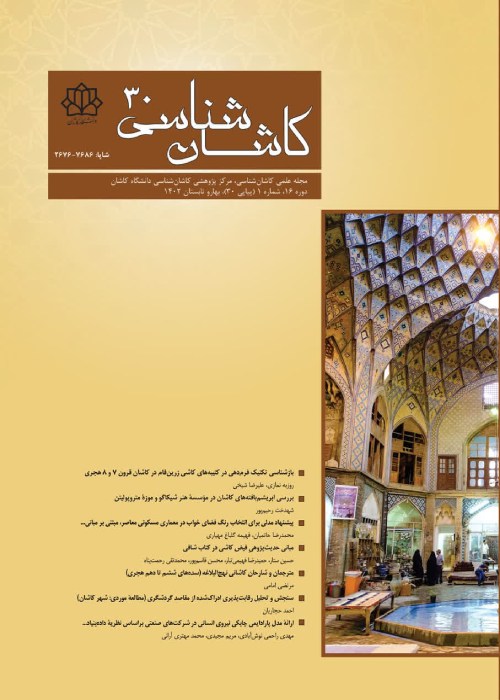Presentation of the Paradigmatic Model of Human Resource Agility in Industrial Companies based on Grounded Theory (A Case Study of Industrial Companies of Aran and Bidgol)
Introduction :
Since 1990s, management science researchers have proposed alternative approaches to achieve and maintain sustainable competitiveness which considers organizational adaptability as a continuous and sustainable process. However, organizations are able to form capabilities in their operational processes that form flexibility, change, and adaptation to changing conditions without any need for permanent, mandatory, and fundamental changes. This approach is known as ‘organizational agility’. One of the fundamental components of organizational agility is the agility of human resources of organizations. The expression ‘human resource agility’ means the scientific readiness of the forces to enforcing fundamental changes in the processes, structures, and organizational culture along greater satisfaction achievement and integration of all processes. Therefore, regarding the significance of this issue, the present research was conducted with the aim of presenting a paradigmatic model of manpower agility in industrial companies based on data base theory in industrial companies of Aran and Bidgol region.
In terms of purpose, the present research is fundamental, and regarding its method it is qualitative, focusing on the database approach. The statistical population of this research included all academic experts, whose area of expertise was management, including faculty members of universities in Isfahan province (more than 150 people) as well as the vice-presidents and managers of industrial companies in Aran and Bidgol industrial towns. Besides, qualified experts acquainted with the category of organizational agility were included in the study. The sample size included 15 academic experts, faculty members, and 15 vice presidents as well as the managers of great and lower industrial companies, selected by purposeful and judgmental sampling. The sampling process continued to achieve theoretical saturation. Sampling criterion was based on knowledge and expertise related to human resource agility. The selection of managers, assistants, and experts were carried out by academic degrees related to the management fields. These included those with occupational experience (10 years and above), career success (size of workforce, size of work space), high production and sales rate with export essentiality, and operational experience in the organizational field. The data collection tool was a semi-focused interview. The data was analyzed using qualitative data analysis software (MAXQDA) and applying coding procedures. For measuring the credibility of the research, the study used Lincoln and Goba criteria, including researcher’s immersion in data, composition (data and researcher), external revise, verifiability (keeping data for later analysis), transferability (providing rich and maximal descriptions), and credibility (repeated contacts with research environment and peers). Reliability was confirmed by using structured procedures of convergent interview, structured processes of recording, and compiling and interpreting data using two interviewers to perform interviews separately and in parallel. The analysis of the interview texts provided 443 open codes that were placed in the form of the pillars of the paradigm model of human resource agility in medium and large companies.
The findings displayed that the central phenomenon of the research, ‘agile human forces’, consists of eleven components: knowledge and learning, intelligence and competence, innovation and creativity, speed, adaptability, responsiveness, flexibility, resilience, precaution, foresight, and changeability. Causal conditions and determination of human resource agility in medium and great industrial companies included: training and learning agile, the perception of inefficiency and malfunctioning, the benefiting of sustenance and support, occupation turnover and enrichment, responsibility and continuous preparation, agile leadership, benefiting authority and occupation and professional independence, skill enhancement and organizational access. At the same time, the background conditions and platforms for creating human resource agility consisted of personality traits and characteristics, values and occupation platforms, work tendencies, structural factors, open communication, the existence of an environment for cooperation and interaction, the extension of culture of collaboration, and change in the organization. Meanwhile, some intervening factors such as enhancement of welfare indicators, simplicity, variety, and the redesigning of work, the adaptation of performance management, knowledge-based organization of service compensation system and virtualization or organization-based technology in the process of human resource agility in medium and large companies had positive or negative intervention. In this situation, human resources agile action strategies included positive activism, coherent and integrated performance, and group and collective activities. Eventually, the realization of human resource agility in medium and large companies of Aran and Bidgol industrial town conveyed consequences and effects in both inter-organizational and extra-organizational realms. In the inter-organizational field, the agility of employees and the equipping of them with speed, flexibility, adaptation, and optimal response in the organization led to the reduction of organizational costs as a result of increasing the efficiency and effectiveness of human resources. However, among the other consequences of agility were the development of organizational synergy resulted from collaboration among agile employees; the production of required organizational knowledge and experiences; the improvement of the internal quality of the goods and services provided; the external quality (providing the demands and needs of customers and stakeholders) of products and services with content value-added and high quality of product endurance; increased job satisfaction and improved quality of occupational life of human resources; the expansion and development of agility drives to other organizational levels; the reduction of service delivery time and market supply as a result of high speed of service delivery and ease of replacement of forces and job diversity in the aforementioned organizations and companies. In extra-organizational areas, it also increased the satisfaction of the organization's stakeholders and customers; it also expanded the organization's competitive capabilities while it increased the amount of economic savings maximizing profit and competitive advantages in the financial markets.
The results of this research showed that human resource agility in medium and large industries cannot be considered as a single-factor phenomenon isolated from continuous and complementary processes and flows. The agility of human resources in medium and large companies of industrial towns depends on various factors enabling the bases, causal conditions, strategies, and intervening factors of the agility of the forces in industrial organizations. It also conveyed many internal and external effects. The foundation-data model, obtained in this research, confirms the components of human resources agility models by Meredith and Francis (2000), Chan and Tong (2009), Quinn et al, Shrihai and Karosky (2014) and others. It theoretically provides the causal and background conditions and facilitating factors that prepare the organizational environment of medium and large companies in Aran and Bidgol industrial towns to achieve the agility of human resources.
- حق عضویت دریافتی صرف حمایت از نشریات عضو و نگهداری، تکمیل و توسعه مگیران میشود.
- پرداخت حق اشتراک و دانلود مقالات اجازه بازنشر آن در سایر رسانههای چاپی و دیجیتال را به کاربر نمیدهد.



